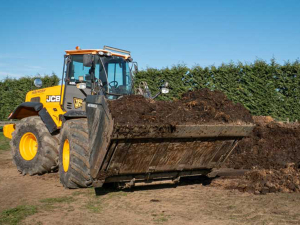A range of environmental moves by farmers across the country are starting to deliver results.
Strong and steady progress towards environmental goals is being made by New Zealand dairy farmers, with significant work undertaken on farms over the past 10 years.
Dr David Burger, DairyNZ’s strategy and investment leader for responsible dairying, says improvements have come about in a number of ways, including by fencing cows out of waterways and improved effluent management practices.
A 2015 DairyNZ and Federated Farmers survey showed an estimated environmental spend by farmers of over $1 billion from 2010. That equated to $18,000 a year per farm, or $90,000 over the five-year period – with 70 per cent of that spending estimated to have been in the area of effluent management. This is notable because effective effluent management is a fundamental step to improve water quality.
In 2013 the dairy sector launched the Sustainable Dairy Water Accord– a major commitment from the sector to playing our part in helping to improve water quality in New Zealand. Its purpose is to enhance the overall performance of dairy farming’s effect on freshwater.
The Accord lists a set of national good management practice benchmarks aimed at lifting environmental performance on all dairy farms. Commitments to planting alongside farm waterways (known as riparian planting) and improving effluent management are included. There are also measures to improve efficiency of water and nutrient use and comprehensive standards for new dairy farms.
Through the Accord, which is voluntary, 97 per cent of significant waterways on dairy farms (over 26,000 km), are now fenced off to keep cows out, and 99.7 per cent of regular stock crossings now have bridges or culverts to protect water quality. Farmers are also working towards establishing riparian management plans to help manage contaminant runoff from the land. Supporting this is a newly developed tool, the Riparian Planner, which helps farmers set up a plan and advises on suitable species to plant and how this work should be carried out.
In 2016, the Riparian Planner tool won an award by the New Zealand Association of Resource Management for Outstanding Contribution.
Farmers have improved effluent infrastructure and practices across many regions and, as a result, incidences of significant non-compliance with local council regulations have decreased significantly, to less than 5.2 per cent in 2016-17.
Many dairy farms have also implemented farm environmental plans to help understand environmental risks on their properties and adopt actions to minimise these risks. This may include actions around nutrient management, for example fertiliser application and nutrient budgeting, and actions to reduce the risk of critical source areas around water ways. Critical source areas are small, low-lying parts of farms such as gullies and swales where runoff accumulates in high concentration.
Over 2500 farmers now have such plans in place, with the intention to roll them out right across the country.
The most recent Land, Air, Water Aotearoa (LAWA) national water quality monitoring report shows that, for the majority of water quality indicators measured, more monitored sites are now showing signs of improving trends than degrading over the past 10 years. LAWA is an independent and robustly operated reporting network, using best statistical and reporting practices across a network of hundreds of water quality monitoring sites.
Burger says the results are great news for freshwater management and great news for everyone actively working to improve water quality outcomes, including the many farmers and landowners all around the country who have undertaken a huge amount of work to reduce their environmental footprint over the past decade.
The report also shows that there are still degrading sites for all indicators, and this means that we all need to keep up our efforts and more work is still needed to continue to improve freshwater outcomes throughout the country. The LAWA finding that macroinvertebrates or the diversity of bugs in streams are under pressure is a big concern.
The dairy sector is committed to doing everything we can, alongside other land users, to continue to contribute to improving the health of waterways including the health of macroinvertebrates.
Much more work is underway, including science into better ways to mitigate contaminant runoff from the land before it leaves the farm gate. There are also whole of catchment projects to adopt improved farming practices at scale, and demonstrate those outcomes through monitoring and modelling.
“It’s critical that we have the right solution for the right place and that requires science from us,” Burger says. “Farmers need certainty about where they’re going and that they will be supported. Without that science, they could be focusing on the wrong issues.”
In June this year The Good Farming Practice: Action Plan for Water Quality was launched by Minister for the Environment, David Parker and Minister for Primary Industries, Damien O’Connor, setting goals to be achieved by 2025. This plan sets out agreed principles for good farming practice across the whole country, as well as an action plan to adopt these principles through farm environment plans across all farms over the next five years. It was jointly developed by primary sector groups, including DairyNZ, regional councils and the two ministries.
The dairy sector has a strategic vision, Dairy Tomorrow, which sets out the vision of what we want to achieve together as a sector over the coming decade and beyond. The strategy is a joint initiative by DairyNZ, Federated Farmers, the Dairy Companies Association of New Zealand and the Dairy Women’s Network, and was launched in 2017. It puts improving dairying’s environmental footprint at the front of six commitments, which also include building a competitive and resilient sector, producing the highest quality dairy nutrition, improving animal welfare, fostering employment and helping grow vibrant and prosperous communities.
• Story courtesy of The Vision is Clear.


















